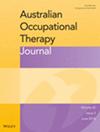What stroke survivors say about living with upper limb spasticity and how they manage it
Abstract
Introduction
Post-stroke spasticity can cause serious impairment, activity limitation, and participation restrictions for survivors, leading to stroke-related disability. While there are hundreds of qualitative studies regarding stroke survivor experience, the phenomenon of what it is like to have post-stroke spasticity is not well understood.
Methods
Ten community-dwelling adults with chronic stroke and upper limb spasticity who had recently participated in an intensive upper limb rehabilitation programme were interviewed. A descriptive phenomenological approach using thematic analysis was used to identify patterns in the data to construct an understanding of the experience of what it is like to have upper limb spasticity.
Consumer and Community Involvement
There was consumer review of the information and consent form; there was no further consumer and community involvement.
Findings
Having upper limb spasticity was an embodied experience. Participants created strategies to manage the spasticity and keep active and engaged in valued everyday activities. Some strategies arose from rehabilitation experience, but most were perceived by survivors to be personally developed by them and unique to their everyday activities. These self-management strategies were patterns of action in everyday life that were anchored in time and their access to and use of health and home-care services and assistive technology. Self-management strategies involved expecting, learning, practising, evaluating, and moving forward.
Conclusion
Findings from this study indicate that stroke survivors who have upper limb spasticity engage in a daily process of adaptation and adjustment to stay active and engaged in valued everyday activities. Further, they use their experience in rehabilitation, access home, and health services as much as they can and develop unique strategies to self-manage upper limb spasticity to reduce impairment and engage in activity. Strategies in this study provide insights for stroke survivors, families, and therapists on ways self-management can be enacted from a survivor perspective.

 求助内容:
求助内容: 应助结果提醒方式:
应助结果提醒方式:


